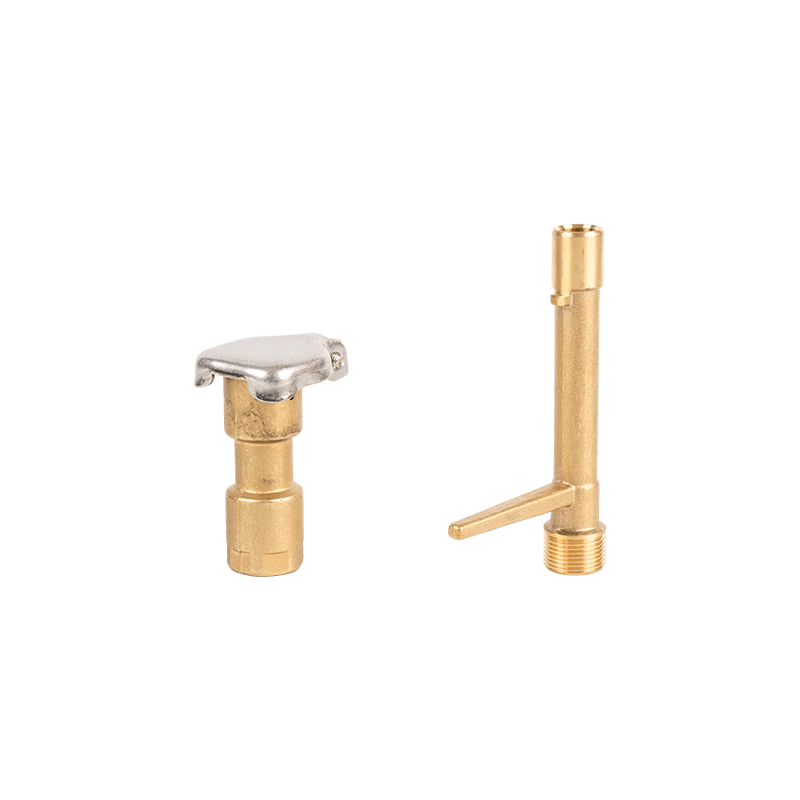Quick Coupling Valves contribute to uniform water distribution in irrigation systems through several key mechanisms:
Consistent Pressure Regulation: Quick Coupling Valves are equipped with sophisticated pressure regulation mechanisms that ensure a steady pressure level throughout the entire irrigation system. This uniform pressure is maintained regardless of fluctuations in the water supply or variations in demand. By effectively stabilizing pressure, Quick Coupling Valves prevent the occurrence of pressure spikes or drops, which can lead to unequal water distribution. This consistent pressure is crucial for achieving uniform irrigation, as it ensures that each sprinkler or emitter receives the same amount of water, regardless of its location within the system. Moreover, consistent pressure helps optimize the performance of irrigation equipment, prolonging its lifespan and reducing maintenance costs over time.
Precise Flow Control Mechanisms: Quick Coupling Valves offer advanced flow control features that allow users to precisely adjust the flow rate of water passing through the system. This level of precision enables users to customize water delivery to meet the specific requirements of different zones within the irrigation area. Whether irrigating different types of plants with varying water needs or adjusting for soil type and slope, the ability to fine-tune the flow rate ensures that water is distributed uniformly across the entire field. By matching water application rates to the unique characteristics of each zone, Quick Coupling Valves help optimize water usage, minimize runoff, and maximize plant growth potential.
Mitigation of Friction Losses: Friction losses occur as water flows through the pipes and fittings of an irrigation system, resulting in a decrease in pressure along the pipeline. Quick Coupling Valves are designed to mitigate these losses by incorporating smooth internal surfaces, efficient flow pathways, and optimized geometries. By minimizing friction, these valves help maintain a consistent pressure and flow rate, ensuring that water is distributed evenly from the source to the point of application. This reduction in friction losses not only improves the overall efficiency of the irrigation system but also helps conserve energy by reducing the need for additional pumping power to overcome pressure drops.
Strategic Valve Placement: Quick Coupling Valves are strategically placed at predetermined intervals along the main pipeline or lateral lines of the irrigation system. This strategic placement ensures that water is evenly distributed across the entire field, regardless of the distance from the water source. By dividing the irrigation area into manageable zones with appropriate valve placement, Quick Coupling Valves help minimize pressure variations and ensure uniform water distribution. Moreover, strategic valve placement allows for better control and management of water application, enabling users to optimize irrigation scheduling and minimize water waste.
Compatibility with Uniformity-Enhancing Devices: Quick Coupling Valves are designed to work seamlessly with a variety of irrigation devices, including sprinkler heads, drip emitters, and micro-sprayers, that are specifically engineered to provide uniform water coverage. These devices are selected based on factors such as precipitation rate, spacing, and distribution pattern to ensure even water application across the irrigated area. By integrating Quick Coupling Valves with uniformity-enhancing devices, users can achieve precise control over water distribution, minimize the risk of overwatering or underwatering, and promote uniform plant growth. Additionally, the compatibility between Quick Coupling Valves and these devices allows for easy customization and optimization of the irrigation system to meet the unique needs of different crops, soil types, and environmental conditions.
YR9106 BSP 3/4" brass quick coupling valve, stainless steel cap
 By Admin
By Admin 